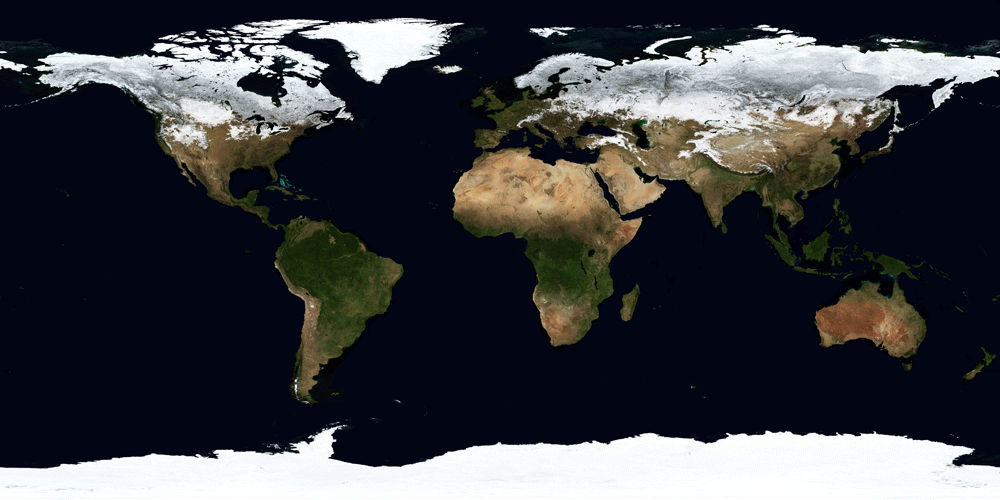It’s the 21st of December today - the darkest, the shortest day of the year measured in hours of sunshine. Why do the days have different lengths, why are there seasons and when are we closest to the sun? Questions like these will be answered in today’s Advent calendar article.
Already in school one learns from the division of the year into four seasons, spring, summer, autumn and winter. Nature and man have always adapted to this annual rhythm. Since Nicolaus Copernicus [1] and Johannes Kepler [2] we know also in Europe that the earth moves around the sun and that its orbit, inclination and self-rotation are decisive for our time measurement.
What is the reason for this? The sun, as a large glowing gas ball, forms the centre of our solar system and has an attracting effect (gravitational force) on all nearby objects, e.g. the earth and all planets, as well as rocks (asteroids) in our solar system. These mentioned objects are attracted by the sun, but (most of them) do not fall into it, because they move on elliptical orbits around the sun.
Do it yourself: Ellipses constructed by yourself. Take a cork plate, place a sheet of paper over it and fix two drawing pins (the so-called focal points) on the cork plate (at a distance of about 10 cm). Tie the two ends of an approx. 15 cm long yarn to it. Now tighten the yarn with a pencil and move the pencil around the drawing pins with the string tightened. This should create an ellipse (see figure 1).

This is a fragile equilibrium that has developed over the billions of years. If you randomly place objects around a star with random initial velocity, most of them collide or fall into the star. Only very few find a stable orbit, like our planets and moons.
So the planets orbit the sun because they are in a stable orbit. They can also rotate around their own axis. The fact that the earth rotates around its own axis and once faces the sun and once is turned away from it again gives rise to day and night. What exactly is a day now? Suppose we fix a point on the earth (for example, the place where we are at the moment) and observe the sun. Around noon the sun will reach the highest point in the sky (we say the sun is at its zenith). The duration until the sun reaches its highest point again is defined as a (sun)day, which we divide into 24 hours and further into minutes and seconds. However, this is not the time the earth needs to make a complete rotation around its axis. We call this time for a total rotation a “star day” and it is only 23 hours 56 minutes and about 4 seconds and is therefore about 1/365 shorter than the sun day described earlier. The explanation for this difference lies in the fact that the earth rotates around its own axis while it moves a bit around the sun and then has to turn 1/365 to look to the sun again.
We already know now, why there is a year and a day, but not yet, how the seasons develop and why the shortest day is just today. Therefore we want to have a closer look at the rotation of the earth, the axis around which the earth rotates is tilted by 23.4° to the orbit axis, the imaginary axis around which the earth rotates around the sun (see figure 2).
In this way, certain areas of the Earth are more exposed to the sun at certain times (the seasons) (because they are then inclined towards the sun) and less at other times. Today is the day when the northern hemisphere receives the least amount of sunshine. Therefore we speak today of the darkest day or shortest day (in Villach 8:32 hours) of the year. From tomorrow on, however, the length of the day slowly increases again. On New Year’s Eve the length of the day is already four minutes longer than today.
How are the seasons related to the temperature? Since the earth is less facing the sun in winter, it also receives less heat from the sun and the air, the seas and the land cool down over time. But it is not coldest at the time when we receive the least solar heat. On average, January is the coldest month of the year. This is due to the fact that the sea and the land store a lot of heat and it takes some time until the temperature actually drops. This is beautifully illustrated by the satellite images of the earth over the year 2004 (see Figure 3).

An important finding is that the seasons do not depend on the distance of the earth to the sun, but on whether we are more or less inclined towards the sun (inclination of the earth’s rotation axis). In fact, we are closest to the sun in winter. Since the Earth has an elliptical orbit around the Sun, there is a point (perihelion = 3 January) at which we are closest to the Sun and a point (aphelion = 3 July) at which we are furthest from the Sun. The earth is 5,000,000 kilometres closer to the sun in winter than in summer. This may come as a surprise, but as already mentioned, the seasons do not depend directly on the distance of the sun to the earth, but on the inclination of the earth’s axis to the sun.
Literatur: [1] Copernicus, Nicolaus. “1543. De revolutionibus orbium coelestium.” Libri VI (1995). [2] Kepler, J. (1992). Astronomia nova (1609). Johannes Kepler Gesammelte Werke, 3, 156.
About the author:
Gerhard Dorn is a theoretical physicist and works as PhD student at Graz University of Technology where he studies quantum effects in electrical transport through molecules.